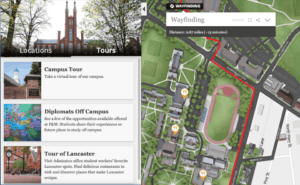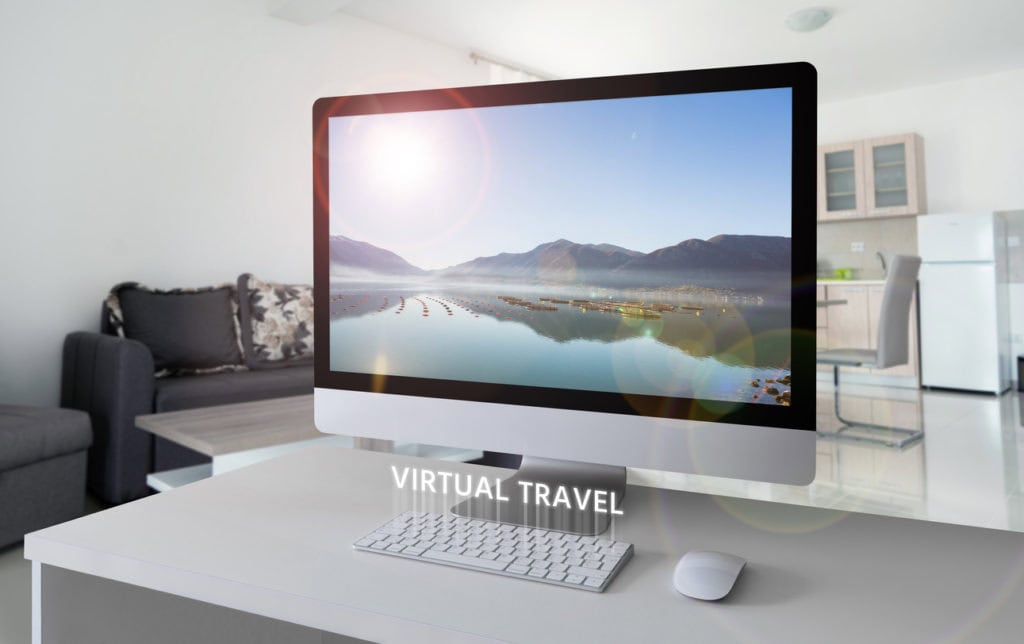The year 2023 begins with marketing in a state of uncertainty that’s as high as it’s ever been in the last two decades. Businesses and organizations are still recovering from the many implications brought about by the COVID-19 pandemic and a potential looming recession. At the same time, nobody knows what the immediate future looks like for both their business model and audience.
Within that environment, two components that are marketing strategy mainstays matter perhaps now more than ever:
- Creativity, particularly in finding new ways to use established marketing tools that will both attract your audience’s attention and help them stay engaged, even in unusual circumstances.
- Interactivity allows your audience to engage with your marketing content, especially while in-person interactions are still severely limited.
At the intersection of these two components are custom interactive maps. These have long been a benefit for savvy marketers, and are now becoming increasingly essential. Especially in fields like higher education and hospitality, but extending to other industries as well, these digital maps could (and should) become a key component of marketing strategy in 2023.
The reason goes beyond the core benefits of interactive maps, which we’ve covered extensively in this space. It also includes the many creative ways in which organizations can, and have, used these maps as part of their marketing efforts. Let’s dive into 10 of these creative uses, which—with the right software—you can easily integrate into your own marketing strategy.
1) Create a Self-Guided Campus Tour
Higher education institutions have been hit especially hard by COVID-19, particularly in their recruiting efforts. In response to a lack of campus visits, many implemented virtual campus tours. Interactive maps recreate the experience for prospective students and their families online.
But it doesn’t have to end there. The right interactive map is the baseline for a self-guided walking tour. Then, families learn about campus without the need to gather in groups or interact with tour guides. The footprint stays minimal, messaging is still controlled by the institution, but the campus tour is real instead of virtual.

2) Highlight Your Organization’s Culture
We know that for many organizations, culture matters not just for current employees. Billion-dollar brands have been built on the basis of a sustainable culture that’s worth supporting by becoming a client, customer, or student. Your interactive map plays a part in communicating that culture in many ways:
- Showcase your sustainability efforts on your premises. Everything from highlighting energy-efficient buildings to pointing out your recycling spots.
- Feature the locations that make your culture unique, from areas where your employees frequently volunteer to student life spaces.
- Integrate messages from organizational leadership that are not just functional. For instance, consider a video message from the president, placed at a central spot on campus.
The execution may be different based on your industry, but the general idea remains the same. Through creative map layers and messaging, you can showcase your culture far beyond your physical premises.
3) Showcase Local Attractions Beyond Your Borders
An organization doesn’t tend to be limited by its physical borders. Prospective tourists are likely interested in local attractions. Prospective students want to know about the local bars and restaurants, as well as shopping opportunities. And even prospective patients and their families will want to know about local restaurants and coffee shops.

One solution: don’t think of your map as something that’s limited by your borders, either. Instead, include layers that stretch beyond. Help your audience find their way around the town and area. With the right platform, you can even link directly to this layer in other communication, making the larger area a core selling point of your marketing message.
4) Get Into Local (and Organizational) History
Who said that your map needed to be bound to the present day? Sure, accuracy matters. You certainly want to represent the physical space as precisely as possible. But that doesn’t mean your efforts have to end there.
Instead, you can use it as a way for your audience to look back at history, both locally and for your organization specifically. Use your map to feature and showcase historical events and buildings, even if they don’t exist anymore. You can even create a historical tour that introduces feelings of nostalgia and a more timeless sense of history among your target audience.
5) Social Media Integration on Modern Interactive Maps
Back to the present: it’s impossible to build a marketing strategy without social media these days. Your map is no exception. Fortunately, the integration possibilities here are worth a deeper look. Let’s explore more creative uses of your interactive map.
Just some of these possibilities include:
- Live social media feeds on the map itself. These introduce another element of interactivity for any users within your audience.
- Active encouragement of sharing the map itself, potentially through incentives to your target audience.
- Virtual ‘scavenger hunts’ within your interactive maps. Use digital breadcrumbs throughout the map and creative uses of social media hashtags.
The more you build these connections with social media, the more comprehensively you can integrate your digital map into larger marketing campaigns.
6) Interactive Maps Showcase Your Accessibility and Inclusivity
Accessibility has, without a doubt, become a hot topic in both marketing and larger organizational strategy in recent years. It’s not just because of restrictive accessibility laws, either. Building a more accessible business model and online presence lets marketers tap into new audiences that have the potential for significant revenue growth.
That’s especially true in industries like health, where accessibility is vital to survival. It’s also true in hospitality, where too many travelers don’t find the accommodations they need. Fortunately, the right interactive map allows you to become an accessibility champion, and to communicate as much as part of your marketing strategy.
For instance, leverage your map to showcase the various ways in which your premises are accessible. Include layers for accessible entrances, bathrooms, etc. You can also leverage more push-communications options, like buttons, for messaging to your target audience.
7) Highlight Your Weather and Seasons
Did you know that you can create seasonal overlays for your map? The functionality of the map doesn’t change much. However, the nuances and subtleties of its communications certainly do.
Colleges and universities, for instance, can highlight their seasons to better compete with some schools in more evergreen climates. Hotels can showcase themselves in the wintry climate that drives ski and snowboarding tourists. In either case, it’s a simple visual trick that pays big dividends in your marketing communications.
8) Add Pop-Ups to Integrate Your Communications
Maps tend to be, by default, a relatively passive communication mechanism. Audiences pushed to them can create their own path of gathering information depending on which layers, spots, and buildings they view. However, pop-ups can change that equation, providing an opportunity for better-integrated communications in the process.
Through map-internal pop-ups, organizations can display customizable messages to users depending on their actions. Pop-ups can appear at first map load, or anytime a user clicks a specific category or location. In the recent past, we’ve seen colleges use this feature to push more proactive COVID-19 safety messaging also shared in other channels, but there are countless other creative uses of this feature for a variety of industries.
9) Leverage Space Planner Features to Attract Event Organizers
Interactive maps, of course, don’t have to be external. They can be just as successful as accurate measures of internal spaces, and that’s where the marketing opportunities multiply as well.
For instance, truly interactive maps are also space-planning tools. They allow event organizers to move around furniture and better envision how the space might work for their occasion. Then, promote that feature through email, print, and other marketing channels.
10) Create a Comprehensive Virtual Experience with Interactive Maps
Finally, for true marketing strategy optimization, it’s important to look at interactive maps as more than isolated marketing channels. Instead, they play a core role in the development of a more comprehensive virtual experience.
That starts with a close integration of the above-mentioned virtual tours. Users should be able to toggle back and forth from function to immersion and vice versa in mere seconds. It also means integrating the digital map in a website that’s designed around it. Feature anything from tutorial videos to forms for improvement suggestions and bug reports.
As we move into 2023, that comprehensive virtual experience remains as important as ever. We don’t yet know when life will go back to “normal,” or if it ever will. Engaging your audience virtually remains crucial in your efforts to attract, convince, and convert them. At the end of the day, you want to continue sustaining and growing your organization.
That’s where Concept3D comes in. Our interactive mapping tools don’t just support the above potential uses, but also integrate directly with our virtual tours to create a more comprehensive virtual experience. We’ve seen clients get creative with digital maps in the recent past, and we know there are plenty of other uses as well. Contact us to start a conversation about using your own online presence for new and creative marketing opportunities, or if you’re simply looking for more information about interactive maps.

